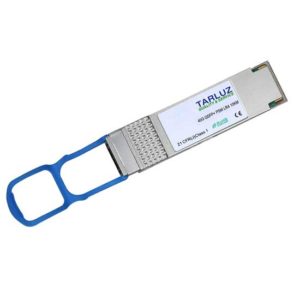There are many types of transceivers in the market. They are made of different materials, different quality and different prices. Some people choose to buy the low prices. But  unfortunately, the transceivers will be eliminated after 2 or 3 months, and you have to find the new companies and new products . This result not only causes unnecessary losses to the company, but also wastes your time and effort.
unfortunately, the transceivers will be eliminated after 2 or 3 months, and you have to find the new companies and new products . This result not only causes unnecessary losses to the company, but also wastes your time and effort.
Today I will tell you how to buy high quality and affordable optical modules!!!
First,you select the transceivers to know what characteristics it has that we think it a good optical module?
When choosing a 40G QSFP+transceivers you should start with the following aspects:
1. Speed and Distance
The maximum transmission distance of different QSFP+ Transceivers is different. Type of Fiber:
- Multimode OM1: 62.5 Micron / Orange colored jacket
- Multimode OM2: 50 Micron / Orange colored jacket
- Multimode OM3 & OM4: 50 Micron / Aqua colored jacket
- Singlemode OS2: 9 Micron / Yellow colored jacket
2. Types of Transceivers:
- GBIC (Gigabit Interface Converter): 1G Ethernet speed, typically an SC fiber connector
- SFP (Small Form-factor Pluggable): 1G Ethernet speed, typically an LC fiber connector
- SFP+ (Small Form-factor Pluggable Plus): 10G Ethernet speed, typically LC fiber connector
- QSFP+ (Quad small Form-factor pluggable): 40 Gigabit Ethernet speed, MPO or LC connector
- QSFP28 (Quad small Form-factor plugable 4×28): 100 Gigabit Ethernet, MPO connector
Just like the transmission distance of 40G SR4 QSFP+ Transceivers used with OM3 optical fiber is 100m, it can reach 150m when it is used together with OM4 optical fiber fiber. The transmission distance of 40G LR4 QSFP+ Transceivers and 40G LR4 PSM Transceivers is 10km, that is, if the expected transmission distance is less than 150m, you can choose 40G SR4 QSFP+transceivers the transmission distance is more than 150m, you can choose 40G LR4 QSFP+ Transceivers and 40G LR4 PSM Transceivers.
3. Interface Type
The interface type of the 40G LR4 QSFP+ Transceivers is generally LC duplex, and the interface type of the 40G SR4 QSFP+ Transceivers and 40G LR4 PSM Transceivers is generally MPO/MTP. There are hot-pluggable and thus can be used or removed during the operation.
4. Cable management
Typically, Transceivers for 40G networks use parallel technology, which uses multiple 10Gbps lasers to simultaneously transmit on multiple fiber bundles to achieve high data rates (4 x 10Gbps), so 40G optics use MPO or MTP cabling.It greatly meets the market demand for high density and high speed.
In order to meet the demand for high-speed Ethernet and cloud computing, virtual data center and other services, the transition of communication transmission network from 10G to 40G is unstoppable. In addition to increasing equipment and fiber optic cable for greater bandwidth and throughput, increasing port density is also a widely accepted method for data center transformation to 40G. 40G data center solutions are typically 40G switches with 40G QSFP+ optical modules, MTP/MPO Fiber Jumper.Instead of traditional duplex LC cabling, 40G SR4 QSFP+ Transceivers and 40G LR4 PSM Transceivers are suitable for 40GbE networks.
In addition to the above three factors, you can also choose the appropriate QSFP+ Transceivers from the aspects of compatibility, receiver sensitivity and temperature.
Speaking of equipment, the equipment you have will also play a role in what transceivers you need to purchase. It’s imperative to know what transceivers are supported by your hardware and what speed does the transceiver port support.
TARLUZ`s QSFP+ transceivers has undergone 100% factory testing and is small in size, saving space. These QSFP-40G-ER4 QSFP+ transceiver modules are designed for use in 40G Ethernet links over single mode fiber. They are compliant with the QSFP+ MSA and IEEE 802.3ba 40GBASE-ER4. Digital diagnostics functions are available via an I2C interface, as specified by the QSFP+ MSA. The transceiver is RoHS-6 compliant and lead-free per Directive 2002/95/EC.
